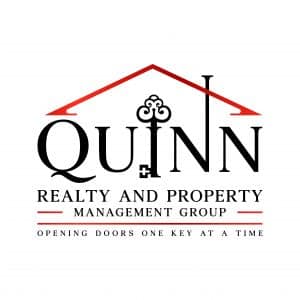Optimizing Building Monitoring Procedures for Long-Term Profitability and Tenant Retention

Efficient Communication Approaches
Efficient and clear interaction ensures that all stakeholders, consisting of property owners, lessees, maintenance team, and monitoring, are on the very same page, leading to smoother procedures and raised renter contentment. Home managers ought to plainly lay out lease terms, maintenance procedures, and communication networks to stay clear of misunderstandings down the line.
Utilizing innovation can additionally greatly improve interaction performance in residential or commercial property administration. Applying building management software that enables real-time updates, automated notices, and simple documents can streamline communication processes and improve overall functional effectiveness. Additionally, regular communication through various channels such as email, telephone call, and in-person meetings can help foster positive connections with renters and deal with any issues quickly.
Innovation Assimilation for Upkeep
In the realm of residential property administration optimization, a vital part that enhances functional performance and maintenance processes is the integration of modern technology for enhancing maintenance tasks. By including innovation into maintenance procedures, property supervisors can take advantage of improved work order monitoring, positive maintenance organizing, and boosted interaction with upkeep teams and tenants.
One substantial advantage of modern technology assimilation in upkeep is the capability to centralize job orders and track maintenance requests electronically. This improves the procedure of obtaining, appointing, and finishing maintenance jobs, causing quicker response times and increased occupant complete satisfaction. Moreover, anticipating upkeep technologies can aid in determining potential concerns before they rise, lowering the possibility of pricey repair work and decreasing downtime.

Data-Driven Choice Making
Using data-driven understandings equips building supervisors to make informed decisions that maximize operational performance and take full advantage of possession efficiency. Quinn Realty and Property Management. By leveraging information analytics devices and technologies, home supervisors can extract useful information from different resources such as renter responses, maintenance records, and market patterns. This information can provide critical insights into renter choices, functional traffic jams, and cost-saving opportunities
Data-driven decision-making makes it possible for residential property supervisors to identify patterns and patterns that might not be apparent with typical observation. For example, analyzing upkeep information might reveal repeating problems in specific units, allowing managers to proactively attend to underlying issues and protect against future pricey repairs. Moreover, by keeping track of renter contentment metrics and lease revival prices, building supervisors can customize their services to meet occupant expectations, eventually improving tenant retention and long-term productivity.
Furthermore, data-driven understandings can additionally notify calculated investment choices by highlighting areas for improvement or development based upon market demand and efficiency metrics. In general, integrating data-driven decision-making processes into home management procedures can result in a lot more effective source allowance, improved lessee fulfillment, and enhanced profitability over time.
Tenant Contentment Efforts
Attracting insights from data-driven decision-making, property supervisors can implement targeted occupant satisfaction efforts to enhance total leasing experiences and foster long-term occupant partnerships. By understanding occupant choices and pain factors, property managers can customize their solutions to fulfill the certain demands of their renters, eventually bring about higher fulfillment levels and boosted lessee retention rates.
One effective occupant contentment effort is to develop clear lines of interaction with tenants to deal with any type of worries without delay. Regular comments surveys can likewise supply beneficial resource understandings right into tenant complete satisfaction levels and areas for enhancement. Residential property supervisors can use this responses to make essential changes and show tenants that their opinions are valued.

In addition, arranging neighborhood occasions and services that provide to the rate of interests of renters can produce a Read Full Report sense of belonging and enhance overall satisfaction. By cultivating a favorable and appealing neighborhood environment, home managers can reinforce occupant connections and motivate long-lasting leases, inevitably improving success and lessee retention over time.
Enhancing Operational Procedures
Effectiveness is critical in property monitoring, demanding the optimization of operational procedures to improve productivity and make best use of sources. Improving functional processes entails identifying locations for enhancement, eliminating redundancies, and applying systems that enhance total efficiency. One crucial facet of enhancing functional processes is the combination of technology options such as residential or commercial property management software application, which can automate jobs, streamline interaction, and give real-time data insights. By digitizing processes like upkeep demands, rent collection, and lease revivals, residential property managers can save time, decrease mistakes, and boost tenant satisfaction.
Moreover, executing standardized procedures and workflows can assist produce consistency across properties, reduce complication, and simplify everyday procedures. Regularly reviewing and optimizing these procedures is crucial to adjust to changing market conditions, tenant demands, and governing demands. By continually looking for ways to improve operational procedures, building supervisors can not only enhance their own performance yet likewise supply far better solutions to renters, ultimately leading to lasting earnings and occupant retention.
Final Thought
In conclusion, maximizing residential property administration operations via efficient interaction, innovation integration, data-driven choice making, tenant satisfaction efforts, and improving procedures is vital for long-term earnings and renter retention. By implementing these approaches, home supervisors can enhance functional efficiency, lower costs, and boost tenant contentment, ultimately causing raised earnings and tenant loyalty. It is critical for home monitoring companies to continually evaluate and change their procedures to fulfill the developing demands of both lessees and the market.
Reliable and clear communication guarantees that all stakeholders, consisting of building owners, occupants, upkeep team, and management, are on the same page, leading to smoother operations and raised tenant satisfaction - Quinn Realty and Property Management. By checking lessee satisfaction metrics and lease revival rates, home managers can tailor their services to satisfy occupant expectations, eventually enhancing occupant retention and lasting profitability
By continually looking for means to improve operational procedures, residential or commercial property managers can not just raise their very own performance however likewise provide much better services to renters, ultimately leading to long-term profitability and tenant retention.
In final thought, maximizing residential or commercial property management operations via reliable interaction, technology integration, data-driven choice production, occupant fulfillment initiatives, and simplifying procedures is crucial for long-lasting success and tenant retention (Quinn Realty and Property Management). By implementing these approaches, home managers can improve functional effectiveness, reduce expenses, and enhance tenant contentment, eventually leading about his to enhanced profitability and occupant loyalty